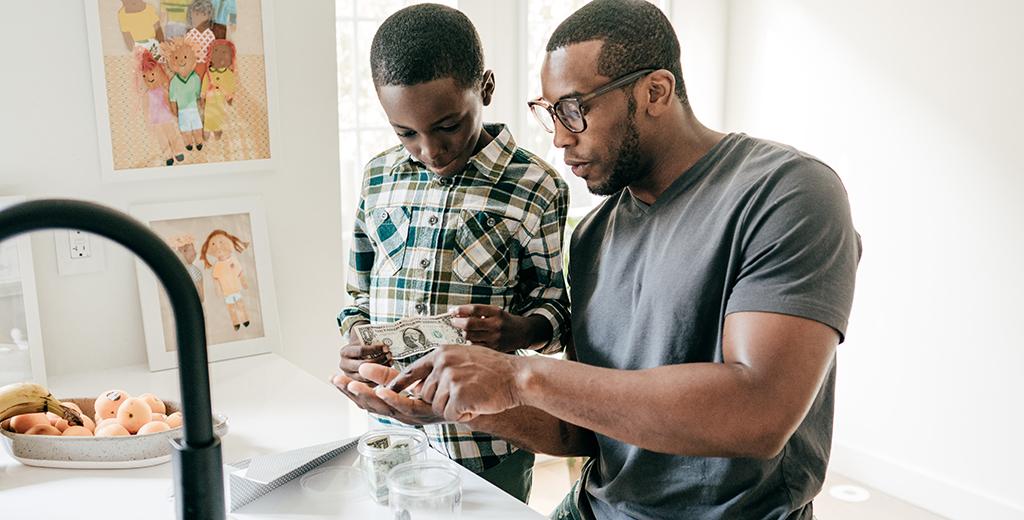5 Lessons for Raising Financially Savvy Kids

As parents, we teach our kids many life skills that will help them as they grow up, like personal hygiene and time management. But have you thought about how you’re teaching your child about money and the responsibility it comes with?
Unfortunately, many children will not get necessary financial education through schooling. Which makes it even more important for us parents to set a good foundation. Once you decide it’s time to get started, here are five lessons that you can customize to teach your child about money at any age.
Lesson #1: What Money Is
Helping your child build a foundational understanding of what money is, how they can use it and where it comes from, takes time. For young children, start familiarizing them with the physical aspect of money by encouraging them to count change and dollar bills. As they get older, show them how you use money at the store to help them understand that they can exchange money for products and services. Once they understand what money can do, encourage your child to try earning their own by doing something fun, like setting up a lemonade stand.
Lesson #2: "Wants" vs "Needs"
It’s important that your child understands that not everything they "want" to have is needed. Explain that “needs” are things that help us survive, and that “wants” are things that would be nice to have but are not as important as “needs”. It’s often helpful to teach your child through examples, you could help your child create a list of wants and needs. You could even play a game to name wants and needs at the grocery store together.
Lesson #3: Patience Pays Off
Saving money and spending less on the things we purchase requires patience. While it might be disappointing to your child when they realize they do not have enough money to buy a new game right away, use this as an opportunity to encourage them to save for it over time or wait for it to go on sale. Explain that their patience will pay off.
Lesson #4: Hands-on Experience
When you’re trying to teach your child about money, it is helpful for them to have their own to learn with. Many parents choose to provide their children with an allowance. There is no one-size-fits-all approach to allowances, so choose a system and amount that works for your family. The most important part of providing an allowance is talking with your child about it. Discussing how they want to use the money and providing guidance will help them develop their financial skills.
Lesson #5: Making Decisions
An important lesson in teaching your child how to be financially responsible is allowing them to make final decisions with their money. This can be one of the more difficult parts of teaching. For example, they might want to buy a new tech gadget and after the purchase, they may regret spending their hard-earned money on it. Remember though, even if they stumble, it can still be a learning opportunity.
Setting your child up for success with a solid financial understanding is invaluable. These are lessons that will last a lifetime. As always, remember, Pinnacle Bank is here to support your family’s banking needs. We have savings account options for children and offer other financial tools like checking accounts as they get older.